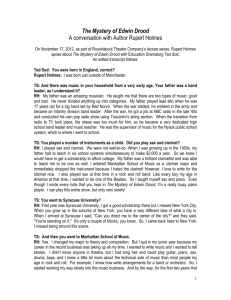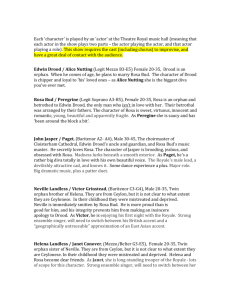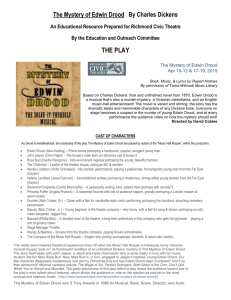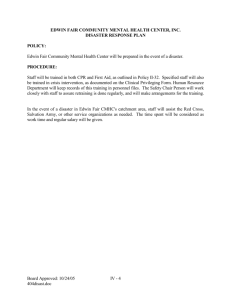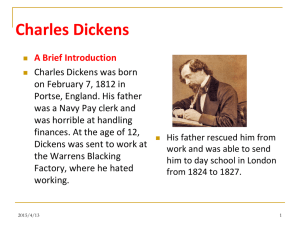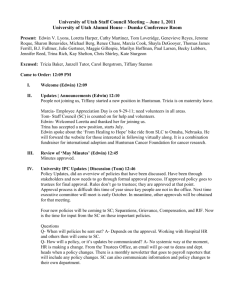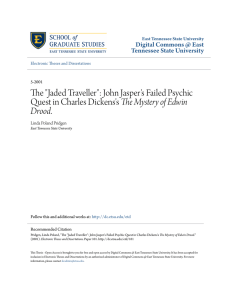The Mystery of Edwin Drood
advertisement
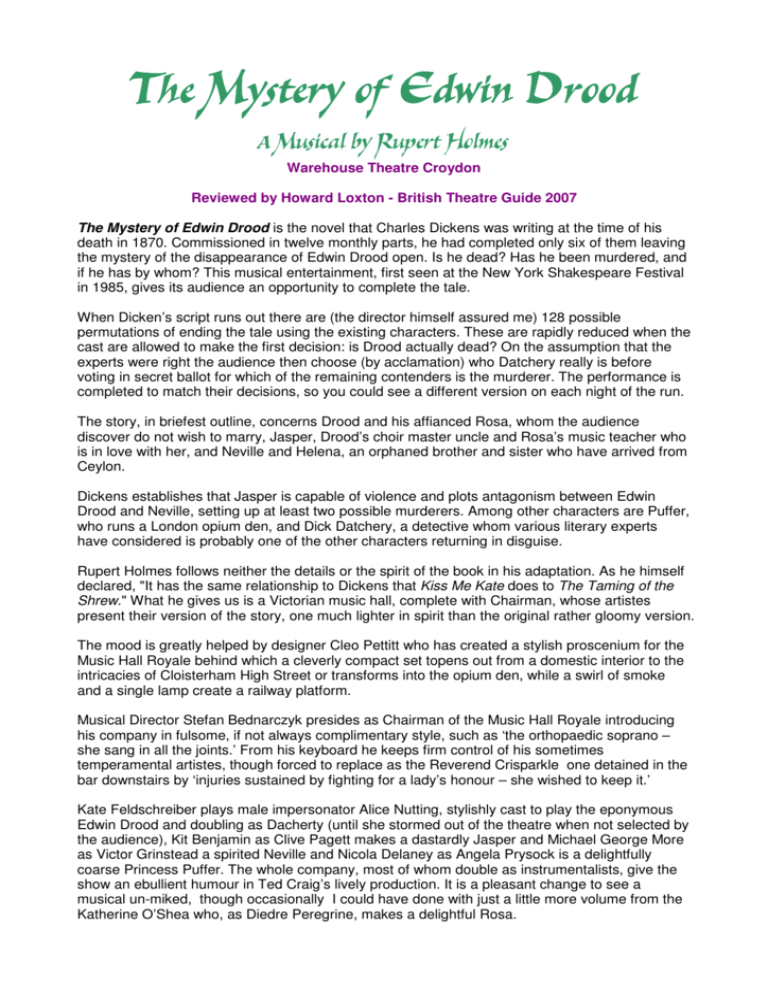
The Mystery of Edwin Drood A Musical by Rupert Holmes Warehouse Theatre Croydon Reviewed by Howard Loxton - British Theatre Guide 2007 The Mystery of Edwin Drood is the novel that Charles Dickens was writing at the time of his death in 1870. Commissioned in twelve monthly parts, he had completed only six of them leaving the mystery of the disappearance of Edwin Drood open. Is he dead? Has he been murdered, and if he has by whom? This musical entertainment, first seen at the New York Shakespeare Festival in 1985, gives its audience an opportunity to complete the tale. When Dicken’s script runs out there are (the director himself assured me) 128 possible permutations of ending the tale using the existing characters. These are rapidly reduced when the cast are allowed to make the first decision: is Drood actually dead? On the assumption that the experts were right the audience then choose (by acclamation) who Datchery really is before voting in secret ballot for which of the remaining contenders is the murderer. The performance is completed to match their decisions, so you could see a different version on each night of the run. The story, in briefest outline, concerns Drood and his affianced Rosa, whom the audience discover do not wish to marry, Jasper, Drood’s choir master uncle and Rosa’s music teacher who is in love with her, and Neville and Helena, an orphaned brother and sister who have arrived from Ceylon. Dickens establishes that Jasper is capable of violence and plots antagonism between Edwin Drood and Neville, setting up at least two possible murderers. Among other characters are Puffer, who runs a London opium den, and Dick Datchery, a detective whom various literary experts have considered is probably one of the other characters returning in disguise. Rupert Holmes follows neither the details or the spirit of the book in his adaptation. As he himself declared, "It has the same relationship to Dickens that Kiss Me Kate does to The Taming of the Shrew." What he gives us is a Victorian music hall, complete with Chairman, whose artistes present their version of the story, one much lighter in spirit than the original rather gloomy version. The mood is greatly helped by designer Cleo Pettitt who has created a stylish proscenium for the Music Hall Royale behind which a cleverly compact set topens out from a domestic interior to the intricacies of Cloisterham High Street or transforms into the opium den, while a swirl of smoke and a single lamp create a railway platform. Musical Director Stefan Bednarczyk presides as Chairman of the Music Hall Royale introducing his company in fulsome, if not always complimentary style, such as ‘the orthopaedic soprano – she sang in all the joints.’ From his keyboard he keeps firm control of his sometimes temperamental artistes, though forced to replace as the Reverend Crisparkle one detained in the bar downstairs by ‘injuries sustained by fighting for a lady’s honour – she wished to keep it.’ Kate Feldschreiber plays male impersonator Alice Nutting, stylishly cast to play the eponymous Edwin Drood and doubling as Dacherty (until she stormed out of the theatre when not selected by the audience), Kit Benjamin as Clive Pagett makes a dastardly Jasper and Michael George More as Victor Grinstead a spirited Neville and Nicola Delaney as Angela Prysock is a delightfully coarse Princess Puffer. The whole company, most of whom double as instrumentalists, give the show an ebullient humour in Ted Craig’s lively production. It is a pleasant change to see a musical un-miked, though occasionally I could have done with just a little more volume from the Katherine O’Shea who, as Diedre Peregrine, makes a delightful Rosa.
